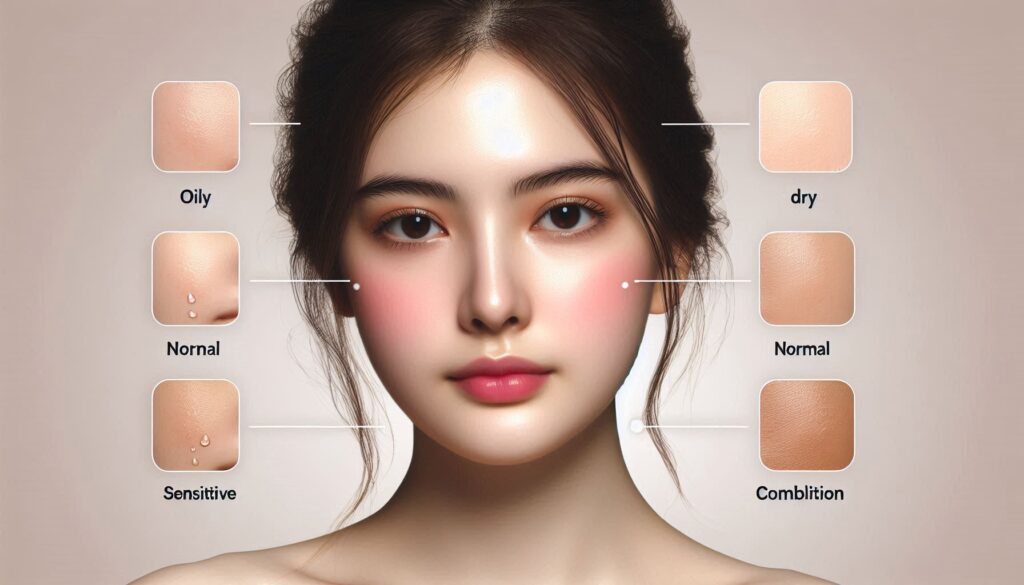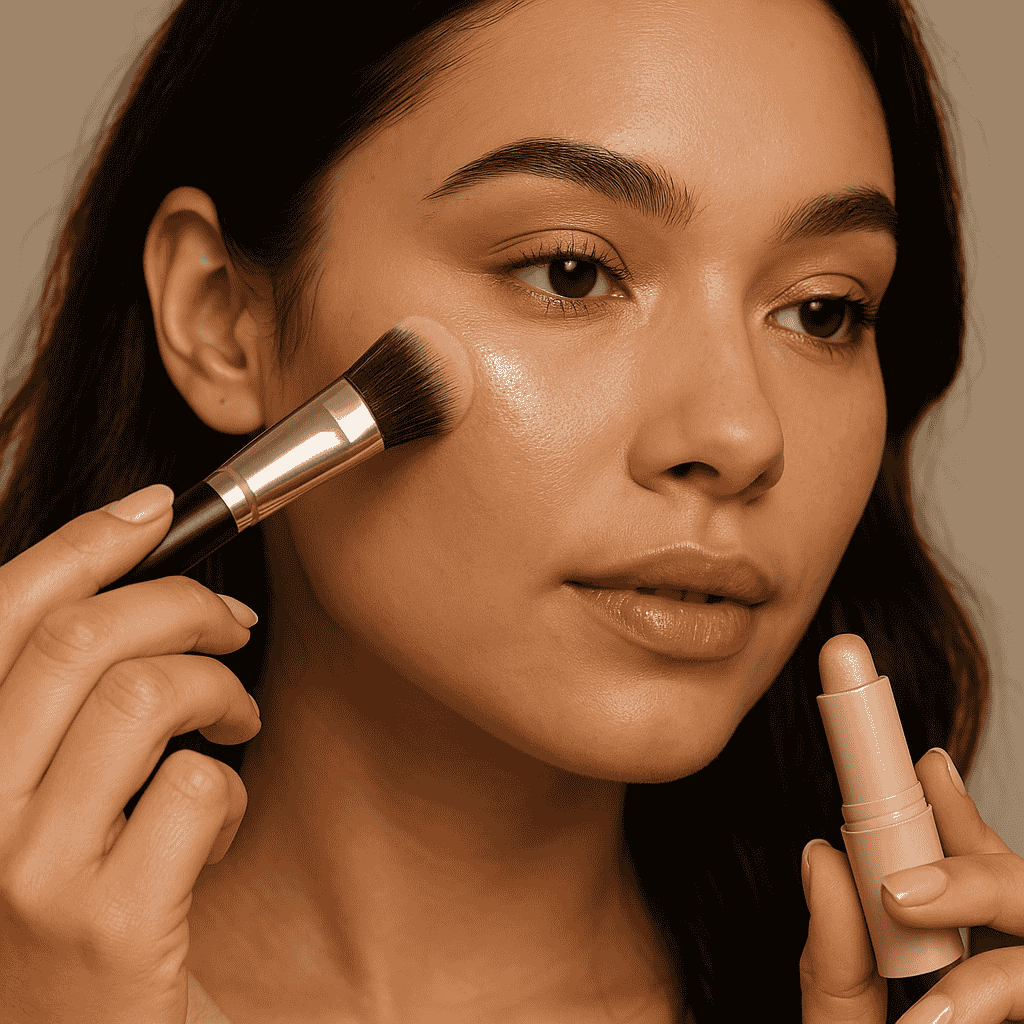In today’s ever-evolving world of skincare trends, knowing your skin type isn’t just a buzzword. It’s the first step toward curating a personalized routine that lasts long and gives you that “look a like” flawless finish. Whether you’re testing your skin type at home or exploring the best products to complement your natural complexion. This guide is designed with care and purpose to help you discover your unique skin profile.
Why Knowing Your Skin Type Matters
Understanding your skin type is essential for selecting the right skincare products and crafting a routine that truly works for you. Here’s why it matters:
- Personalized Care:
When you know whether you have dry, oily, combination, or sensitive skin, you can choose products that address your specific needs. - Effective Remedies:
The best remedies, cures, and home remedies—including nourishing moisturizers and targeted cure products—rely on the accurate diagnosis of your skin type. - Long Lasting Results:
A tailored routine helps your skin look radiant no matter the weather, ensuring your glow is as long lasting as it is flawless. - Avoiding Adverse Reactions:
Using the wrong products can negatively affect your skin’s color and texture, so understanding your skin type is the key to avoiding a bad match.
How to Identify Your Skin Type at Home
Follow these simple steps at home to determine your skin type with ease:
Step 1: Cleanse and Pat Dry
Begin with a gentle cleanser to remove any makeup, oils, or impurities. Gently pat your face dry with a soft towel without rubbing. This step prepares your skin for an accurate assessment.
Step 2: Wait and Observe Skin Type
Leave your skin bare for about one hour and avoid touching it.
- If your skin feels tight and flaky, it may be dry.
- If your skin appears shiny or feels greasy, especially in your T-zone (forehead, nose, chin), it likely is oily.
- If you notice both dryness and oiliness in different areas, you might have combination skin.
- If your skin reacts with redness or irritation, it could be sensitive.
Step 3: Blotting Sheet Test
Use a blotting paper on different areas of your face:
- Dry Skin: The paper shows little to no oil.
- Oily Skin: The paper picks up a noticeable amount of oil.
- Combination Skin: The paper shows oil only in the T-zone.
This simple remedy is one of the best ways to determine your skin’s natural state and helps you decide what kind of skincare products you’ll need.
Creating a Personalized Skincare Routine
Once you’ve identified your skin type, tailor your daily skincare routine accordingly:
For Dry Skin Type:
- Hydrate and Nourish:
Look for long lasting creams and serums that provide deep hydration. - Products to Consider:
Cream moisturizers enriched with hyaluronic acid, soothing gel formulas, and nourishing oils. - Tip:
Use a gentle lip balm like Aquaphor along with your face routine to ensure all skin areas receive proper care.
For Oily Skin Type:
- Control and Balance:
Choose water-based products that help regulate oil production without stripping your skin. - Products to Consider:
Lightweight gels, mattifying primers, and oil-free cleansers. - Tip:
A regular cleansing routine at home and blotting sheets are key to achieving a balanced skincare routine that lasts through changing weather.
For Combination Skin Type:
- Customize Your Routine:
Use a mix of hydrating and oil-controlling products based on which areas are dry or oily. - Products to Consider:
A dual approach with a gentle cleanser, versatile serums, and both cream and gel moisturizers. - Tip:
Adapt your routine seasonally; for example, winter weather might require more hydration, while summer requires light, balancing formulas.
For Sensitive Skin Type:
- Soothing and Protection:
Focus on fragrance-free, hypoallergenic products designed for gentle care. - Products to Consider:
Calming lotions, soothing creams, and minimalistic formulas that do not disrupt your skin’s natural barrier. - Tip:
Always patch-test new products before full application to avoid irritation and ensure the best reaction.
Expert Tips and Trend Insights
- Seasonal Adjustments:
Your skincare routine should adapt to the weather. In colder months, your skin may require richer, more emollient products to cure dryness, while in warmer, humid conditions, a lighter, oil-free routine works best. - Product Look-Alikes:
Not every expensive product is necessary—many affordable products can look a like their high-end counterparts. Do your research to find budget-friendly options that still deliver long lasting results. - Consistency is Key:
The purpose of an effective routine is consistency. Stick to your regimen for several weeks before making changes to truly assess what remedies work best for you. - Educate Yourself:
Follow the latest trends and read reviews. Whether it’s updates from top brands or advice on the best skincare practices, staying informed will help you make better choices.
Knowing your skin type is the foundation of effective skincare. From understanding whether your skin is dry, oily, combination, or sensitive, to creating a personalized routine that adapts at home to the changes in weather. This guide gives you the tools you need for a healthier, glowing complexion. With the right products and diligent care, you can achieve a long lasting, radiant look that truly reflects the trend toward natural, healthy beauty.
✨ Comment below: How did you determine your skin type, and what has been your secret for finding the best routine?
💌 Subscribe to Lovelylady for more top skincare tips, product insights, and beauty trends delivered straight to your inbox.
📸 Share your story: Post your before and after photos with #LovelyladySkin to inspire others on their journey to flawless skin.
Here’s to embracing the purpose of nurturing your skin with care, the right remedies, and a bit of at‑home magic every day!



